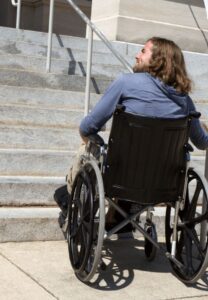Webber Academy Foundation v Alberta (Human Rights Commission), 2021 ABQB 541 is a recent Alberta Court of Queen’s Bench decision by the Honourable Justice R.A. Neufeld which upheld the decision of the Alberta Human Rights tribunal finding that Webber Academy discriminated against some Muslim students by not providing them a place to observe their religious prayer requirements at the Academy during school hours.
Webber is the most recent win by my Partner at Bow River Law, Sarah Coderre who represented the Director of the Alberta Human Rights Commission to defend the AHRC’s decision in this case!
The Webber case is important because it involves the sorting out of competing religious freedoms (Muslim / Secular) and the intersection of provincial human rights with the Charter of Rights and Freedoms.
Facts
The decision has a good starting summary of the facts, so that is quoted here:
[1] In November of 2011, Sarmad Amir and Naman Siddique (the “Students”) were accepted for admission into Webber Academy (the “Academy”). They were fourteen years old. According to their Sunni Muslim religion they were required to pray five times a day, at varying times depending on the position of the sun. The prayers were to be performed by kneeling, bowing over into a prostrate position and then standing, while reciting the prayers.
[2] Prior to admission, the Students and their mothers believed that the Academy was prepared to let them do their prayers at school, although no dedicated prayer space would be made available. For the first two weeks, school staff made that accommodation, allowing the Students to use spaces such as empty classrooms to perform their prayers. However, when senior school administrators found out what was happening, the Students were told that religious practices were not allowed at the school, and their conduct was thus prohibited.
[3] A series of meetings and email communications followed. The Academy offered to allow the Students to leave classes and go to an off-campus location such as a nearby mosque to perform their prayers. The mothers of the Students rejected that solution on the basis that it could compromise the safety of the Students.
[4] The Students continued to pray on campus (on one occasion joined by their mothers) in defiance of the Academy’s direction. They were told that they would not be accepted for re-enrollment for the following school year. They then transferred to another private school, which was prepared to accommodate their prayer rituals on campus.
Some additional facts important to this case were as follows:
- Webber Academy is a private school and the school community had a sincere belief in being a non-denominational, secular learning environment;
- Webber Academy allowed students to wear religious symbols such as turbans, and displayed a Christmas tree during the holiday season;
- The form of accommodation these complainant students were provided initially was just an empty available classroom so they could pray privately on school grounds at the appropriate times.
Analysis / Conclusion
Webber Academy’s main positions in this case were:
- That the refusal to accommodate had no adverse impact on these students. The students could either choose to pray silently or could pray off-campus a short distance away;
- However if it did cause an adverse impact, then accommodating these students’ requests was undue hardship for Webber Academy because it went against the deliberately secular culture of Webber Academy and its membership and could open up a plethora of similar accommodation requests;
- That in any event, accommodating in this instance would violate the Charter right of Webber Academy and its membership to be a school that is free from religion.
The Court noted the following with respect to the standard of review applicable in this case:
[30] Vavilov replaced the Dunsmuir contextual approach to standard of review with a new and simplified framework. The fundamental change was to create a presumption that the standard of review of an administrative decision will be reasonableness. In support of that presumption, the Supreme Court also provided additional guidance as to how reasonableness is to be assessed. The focus is to be on considering the outcome of the decision in light of its underlying rationale in order to ensure that the decision as a whole is transparent, intelligible and justified: para 15.
[…]
[33] The law regarding what constitutes a palpable and overriding error is also well established. It has two components: (i) the error must be one that is obvious, or plain to see, and (ii) the error must be to go to the root of the decision: Sunshine Village Corporation v Boehnisch, 2020 ABQB 692 at paras 94 and 95.
The court found that the following AHRC findings displayed no palpable and overriding error:
- Webber Academy’s policy of not providing prayer spaces was discrimination with respect to goods, services accommodation or facilities customarily available to the public;
- The refusal to accommodate a prayer space had an adverse impact on the students;
- Webber Academy could have accommodated the students short of undue hardship.
The court found that the AHRC had properly considered Charter values in arriving at its decision, reasoning as follows:
[51] The Tribunal noted the Academy’s position that a requirement to accommodate the Students’ request would infringe on the Academy’s constitutional right to be free from religion. The Tribunal agreed with the Academy that the school community had a sincere belief in being “non-denominational”, and that there was a sufficient nexus with conscience and religion in that belief to bring it within the scope of constitutionally-protected religious beliefs.
[52] However, on the facts, it disagreed with the contention that such beliefs would be interfered with by accommodating the Students’ request for a quiet, private place to pray. This was held for essentially the same reasons that were given for not finding undue hardship under the conventional test set out in British Columbia (Superintendent of Motor Vehicles) v British Columbia (Council of Human Rights), [1999] 3 SCR 868. That is, that there was no evidence of an actual interference with the belief, given the ease with which the Students could be (and, for two weeks, had been) accommodated.
[…]
[61] I am somewhat sympathetic to the Academy’s argument on this issue. Religious beliefs are by their nature highly personal and inherently incapable of objective proof – including beliefs rooted in a desire to be free from religion. However, the Appellant mischaracterizes this as a double standard, because the Students’ beliefs in multiple daily prayers is analyzed at the initial ‘sincere belief’ stage. In contrast, evaluation of the School Community’s interference falls under the second stage, which considers whether an infringement was more than trivial or insubstantial. This latter evaluation is objective and warrants evidence. This is mandated by the case law (see Chênes at paras 23-24). To do otherwise would enable a claimant to effectively decide her own case by defining her perceived interference to fit the relief sought.
[62] The Tribunal’s decision regarding the infringement issue is set out at paras 205 to 209:
…the evidence does not support a finding that this belief or practice was or would be interfered with by allowing students to pray in a private, quiet space. As counsel for Alberta submitted, this is not a case where the complainants wanted to perform their religious activities publicly, they were not intent on recruiting converts and this was not a case where a religious group sought to provide instruction with respect to religion.
[206] I find that there is no infringement upon the respondent’s belief, practice or intention that the school remain non-denominational and secular. Webber Academy allows exceptions to its dress and uniform policies so that students may wear symbols of their religious faith and there is no evidence that this in any way detracts from its non-denominational or secular nature. The school does not object to students praying covertly; this is not perceived to be an activity that detracts from the non-denominational or secular nature of the school. None of the witnesses testified that allowing the students to pray in a quiet, private place affected their own personal conscience or beliefs. When the complainants in this case were given access to a private room in the administration offices, in order to conduct their prayer, the school community was not even aware it was happening. When the complainants were permitted to pray at the back of a classroom during a tutoring session, there were no complaints. [underline added]
[207] Allowing students to conduct their prayers in a quiet, private place does not make religion part of the school, does not detract from the school’s primary objectives and priorities, and does not link the school to a particular religion. It is no more obtrusive than permitting the display of religious symbols or permitting grace before a meal. Allowing students to identify themselves as followers of a specific religion through exceptions to the dress and uniform policies, displaying a Christmas tree or allowing students to go to a private quiet place to pray does not mean the school is condoning, supporting or approving of religion on campus. [underline added]
[…]
[63] In my view, the Tribunal properly decided that there would be no infringement of the Webber Academy School Community’s s. 2(a) Charter rights if it was required to accommodate the Students’ prayer request. The Tribunal carefully reviewed the evidence given by the Academy’s administrators, staff and parents. It noted the concerns expressed by witnesses regarding the potential impacts of accommodating the prayer requests (even though the Students had long since left the school, with no indication on the record of the Tribunal’s original decision having created any such impacts). It noted that other accommodations of religious practices had been made from time to time, and that the Students had successfully transferred to an equally prestigious private school without difficulty. It noted that during the period in which the Students’ prayers were accommodated at the Academy, no one noticed the praying – let alone felt impacted by it.
The court went on to find that the tribunal had erred by not considering whether or not the discrimination was nevertheless reasonable and justifiable. However, the court found that this analysis would not have assisted Webber Academy on the facts of this case. Therefore, the appeal was dismissed on all grounds.
My Take
I think this case would have been much more difficult to decide at all levels than it seems at first glance. At first glance people look at this case and have an immediate opinion of which way it should go, but upon reading the and considering the facts it is more challenging. This case is about balancing competing human rights and constitutional rights, and this is not something easily done.
Webber’s actions as described in the written decisions had as slight feel of islamophobia to it (to me), which I would suggest may have been felt by the judicial decision-makers as well, and may have worked against Webber’s position. I think the ultimate result was correct and reasonable, because the accommodation of these students did not seem a difficult thing to accomplish and the school had historically allowed exceptions to its general secular culture. I think the case would have been much harder to decide if the requested accommodations had been more substantive.
Way to go, Sarah Coderre!
The Webber Academy case itself can be found at the following link: https://www.canlii.org/en/ab/abqb/doc/2021/2021abqb541/2021abqb541.html?resultIndex=1









